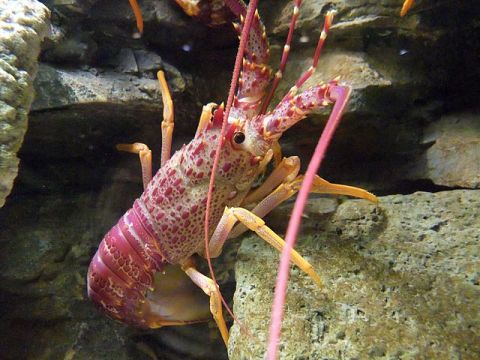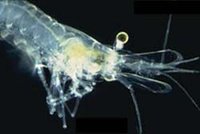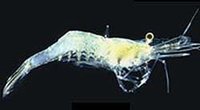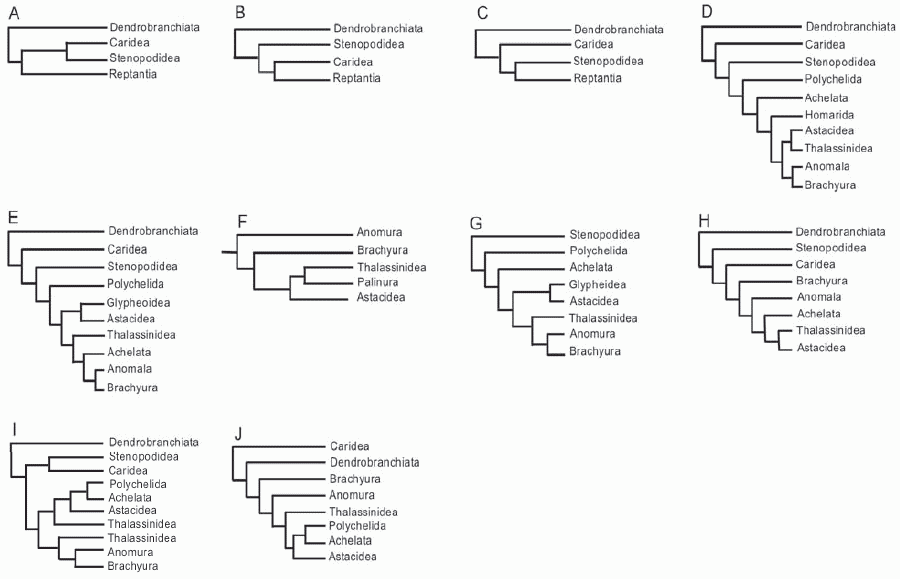Decapoda
Taxa on This Page
- Decapoda
Introduction
The Decapoda are one of the most familiar groups of crustaceans, as well as the most succesful and diverse of all the extant orders. They include such well-known marine species as lobsters, crabs, and shrimp. While most are marine, the crayfish are a characteristic freshwater group. Several groups of mostly tropical shrimp have also entered freshwater. Some species of crab have addapted to an almost terrestrial existence.
The Order Decapods has traditionally been divided into two suborders.
The Natantia ("swimmers") or shrimps are a paraphyletic assemblage defined by abdominal appendages well developed for swimming. In other words, all deacpods were originally shrimp like forms
In the Reptantia ("walkers") include crabs, lobsters and crayfish. Here the abdominal appendages are small, whilst the first pair of legs are usually enlarged and provided with pincers.
Current classifications however are cladistically based and so the paraphyletic Natantia is rejected in favour of a stepwise series of taxa leading to the monophyletic Reptantia. On this basis, taxonomic classifications now divide the Order Decapoda into the two Suborders Dendrobranchiata for the largest shrimp clade, and Pleocyemata for all other decapods. The Pleocyemata are in turn divided into half a dozen infra-orders.. MAK120523
Morphology
Decapod morphology may be illustrated by that of the crayfish. The cephalothorax has a pair of stalked eyes and 12 pairs of appendages. The first and second pairs of antennae are used as sense organs to probe the substrate. The base of the first antennae houses a statocyst which is used for balance. The next five pairs of appendages on the cephalothorax are used in food handling, while the last five pairs of appendages are the walking legs. The first 2 or 3 pairs of these legs are clawed and are used for food handling, defence and digging into the substrate. Their abdomen bears pleopods (swimming legs) on the first five segments. Decapods are sexually dimorphic. The first two pleopods of males are modified to transfer sperm to the female, while females have a calcified area between the fourth pair of periopods used to receive the male's spermatophore during copulation. The typical tail fan is composed of expanded uropods on the end of the abdomen.
Decapods have a breaking point at the base of each leg. If they are grabbed or agitated, the muscles contract, severing the leg at this point. If the leg is broken at this point, it can be regenerated later. - Encyclopedia of Earth - Crustacea - Creative Commons
Ecology
Decapods are enormously diverse ecologically, occuring throughout the world's oceans and freshwaters, from surface plankron to abyssal depths. Some species even live on land, including various terrestrial crabs. The decapods include a wide variety of herbivores, omnivores, scavengers, and predators. In temperate freshwaters, decapods are most commonly encountered along rocky or weedy shorelines of quiet bays in water less than 2 m deep, though they occur in water up to 30 m deep. Crayfish can be burrowers, benthic or semi-pelagic. They are mainly nocturnal foragers; their diet consists mainly of macrophytes and debris, but they also eat small insects and crustaceans as well as dead animal matter. Decapods are important prey items for many fish, waterfowl, and aquatic mammals. - Encyclopedia of Earth - Crustacea - Creative Commons
Phylogenetic conundrums
As with the Malacostraca as a whole, there is no agreement on decapod phylogenetic relationships (the same could be said for the various groups of decapods, such as Brachyura and Anomura). The following diagram, from Bracken et al 2009 illustrates this by comparing various phylogenies:
Even just considering the two morphological-cladistic analyses, the only clades that are agreed upon are Pleocyemata, Reptantia (the lobster-like forms and the crabs) , Eureptantia , and Meiura (the crabs and crab-like forms, which here form a monophyletic clade). The molecular analyses are for the most part too variable to be of any use in forming any consenus, apart from the Pleocyemata (hence Dendrobranchiata as a basal taxon (or near basal in one analysis) and Reptantia. Only two molecular analyses out of six (the five in the above diagram plus Bracken et al 2009) recognise the Meiura and only one the Eureptantia (perhaps because the authors also incorporate morphological data in a total evidence approach).
Methodological considerations and false signal artifacts (such as long branch attraction) aside, lack of resolution among molecular analyses might reasonably be the result of a sudden adaptive radiation. This is why it may be impossible to ever determine the exact sequence of cladogensis of the major phyla from the Cambrian explosion, or groups of Placental mammals at the start of the Cenozoic. If decapods underwent a dramatic evolutionary radsiation at the start of the Triassic, we would expect the same situation here regarding the Reptantia. While convergences and reversals - a phenomenon common in the animal kingdom - may explain the lack of agreement between the two morphological studies. For this reason, we have adopted a low resolation phylogeny, at least until future studies verify their results - MAK120528
Descriptions
Decapoda Latreille, 1802
Phylogeny: Eucarida : Euphausiacea + Amphionidacea + * : Dendrobranchiata + Pleocyemata
Characters:. Synapomorphies (from Ax 2000): Body divided into cephalothorax and pleon: carapace covering and fused dorsally with first eight thoracomeres, reaching laterally down to leg bases and enclosing gill cavity; thoracopods with four gills and extra epipodite for gill cleaning; thoracopods 1 and 2 transformed into maxillipeds; scaphognathite (large lobe-shaped exopodite of second maxilla) present, used for pumping water through gill cavity. - CKT.





